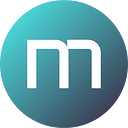DAO Collaborations
Why do DAOs Collaborate?
DAOs will enter collaborations as an opportunity for greater capital efficiency, extending resources, and providing new abilities to their users. DAOs have historically collaborated in order to enter into a joint venture (Gnosis/DX DAO), Community Swap (Melon), to fund a public good (Gitcoin, Commons Stack), or finally to outright merge as a single entity.
Overview
- The Benefits of DAO Collaborations
- Economic Scale
- Transparency & Accountability
- Collaboration Integration
- Summary
The Benefits of DAO Collaborations
DAO-to-DAO “alliances” can share resources and expertise. For example, a DAO with an extensive network of users or a strong reputation can help a smaller or newer DAO gain visibility and credibility during the early stages of production when this is most important. Let’s break down the benefits of DAO collaborations:
Economic Scale
A potential benefit of a DAO-to-DAO collaboration is the ability to pool resources and achieve economies of scale. For example, two DAOs working on similar projects may combine their efforts and resources to achieve greater efficiency and effectiveness. This could include sharing development costs, pooling liquidity, or joint marketing and promoting their products or services.
Additionally, DAOs share similar operating costs and overhead requirements — therefore, DAOs can band together to share resources to save funding. This basic form of cost-sharing is made extremely easy via on-chain mechanics that currently exist. For example, funding can be allocated per DAO, and a payment splitter can ensure that individual DAOs contribute accordingly to their required amount.
The outcomes, as mentioned above, between two entities would have to be formed via an operational collaboration. Yet, in a DAO collaboration, the decentralized nature allows token holder input to decide the outcome.
Transparency & Accountability
DAO-to-DAO partnerships can help create greater accountability and transparency within the broader DeFi ecosystem. The transparent nature of DAOs combined with collaboration between one DAO and another amplifies the added power of the DAO ecosystem.
In the most extreme form of DAO collaboration — two or more DAOs will merge entirely for various reasons, including their similar tech structure or complimentary services.
Some DAOs have opted to work together on a blockchain initiative or public good. These situations arise when a DAO offers a niche tool or offering that, in conjunction with another DAOs protocol, can result in a product that furthers blockchain-wide positivity.
Collaboration Integration
Cross-chain integrations
DAOs can integrate through cross-chain interoperability protocols: These protocols allow different blockchains to communicate with each other, enabling the transfer of assets and information between DAOs. Some examples of interoperability protocols include Cosmos, Polkadot, and Interledger. By using interoperability protocols, a DAO can facilitate cross-chain communication and collaboration.
Cross-chain bridges: Cross-chain bridges allow different blockchain networks to be connected, allowing assets and data to be transferred between them. Some examples of cross-chain bridges include RenVM, Wormhole, and Polygon. Using cross-chain bridges, a DAO can facilitate the transfer of assets and data between different blockchain networks.
Multi-chain platforms: Some blockchain platforms, such as EOS and Tron, support the creation of smart contracts and dApps on multiple chains within their ecosystem. This allows a DAO to operate on various chains within the same platform, facilitating cross-chain integration.
Shared Governance Integrations
Furthermore, DAOs can also integrate through the use of shared governance structures. In this model, multiple DAOs can form a partnership, with each DAO retaining its autonomy while also contributing to the overall decision-making process of the group. This can be a valuable way for DAOs to cooperate and pool resources while maintaining their independence.
Because DAOs are demarcated by a token and possibly additional tokens based on their ecosystem — a unique situation arises for DAO-to-DAO interaction wherein one DAO would propose a token swap or exchange with another DAO to share the benefits of the primary token. This outcome generally benefits both DAOs and diversifies their responsibility for one another.
Summary
Overall, DAO-to-DAO collaborations can be a powerful way for organizations to enhance their operations and achieve their goals. DAOs can create solid and sustainable partnerships that benefit all parties by sharing expertise, pooling resources, and encouraging transparency and responsibility.
Are you interested in collaborating with MetronomeDAO? Please contact partner@metronome.io to get in touch with our team.
